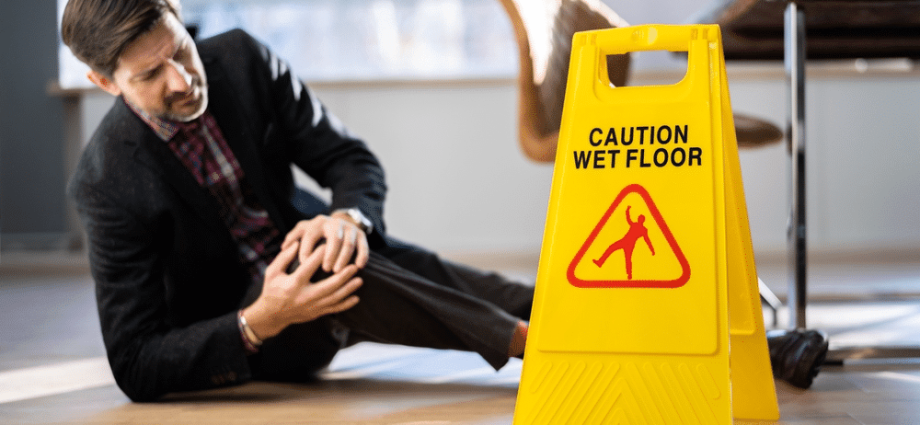Walmart stores across the United States are designed to display large volumes of merchandise, high placed signage, and heavy promotional fixtures. While these installations help customers navigate the store and locate products efficiently, they also create a unique set of dangers when they are not properly secured or maintained. Falling signs, collapsing fixtures, and unstable displays have led to serious injuries nationwide. Chalik and Chalik, who represent injured individuals and never Walmart, frequently investigate these incidents to determine how such hazards developed and why customers were not protected from preventable harm.
Unlike traditional slip and fall accidents, falling fixture injuries involve overhead hazards or objects positioned above eye level. A sign that becomes loose, a display that is improperly mounted, or a shelf that has been overloaded can create a sudden and unexpected danger. These issues often arise when stores rush to set up seasonal displays, promotional signage, or bulk stacked merchandise. Many of these cases are documented and explained through resources like the Falling Signage or Fixtures Injury Claims Department, which highlights the frequency and severity of injuries caused by overhead hazards in major retail chains.
Walmart’s national safety policies require that all signage and fixtures be installed securely, inspected regularly, and monitored for potential hazards. However, enforcement varies widely by location. Stores experiencing staffing shortages or high turnover may overlook loose mounts or worn hardware. Seasonal changes, such as holiday displays or clearance events, often involve quick setup procedures that do not always follow safety guidelines. When these rushed installations fail, a customer can suffer severe injuries, including concussions, spinal trauma, facial injuries, or broken bones.
The legal framework governing these incidents is similar to slip and fall claims but with a critical distinction: overhead hazards often demonstrate negligence more clearly. For a sign or fixture to fall, something typically must have been improperly installed, overloaded, or left unrepaired. A Walmart injury lawyer will examine whether employees noticed warning signs such as wobbling displays, loose screws, or shifting fixtures. If Walmart ignored or failed to correct these conditions, it may be held liable under premises liability law for failing to maintain reasonably safe premises.
Evidence collection plays a crucial role in overhead fixture cases. Photographs of the fallen object, the hardware that failed, damage to the mounting area, or the debris itself can help establish what went wrong. Surveillance footage may reveal whether employees recently adjusted the display or whether other customers reported concerns before the incident. Chalik and Chalik often move quickly to request preservation of video evidence, as Walmart video systems frequently overwrite footage in a matter of days.
Employee statements and maintenance records also become central pieces of evidence. If a manager admits the sign had been loose for several days, or if maintenance logs show repeated issues with the same fixture type, this may demonstrate constructive knowledge. Constructive knowledge means the hazard existed long enough that Walmart should have discovered and corrected it. In falling fixture cases, even small signs of instability may be enough to show that the store failed to uphold its duty of care.
These incidents can cause significant physical harm because falling objects often strike the head, neck, or upper body. Even lightweight signage can cause serious injury when dropped from height. Customers may experience dizziness, vision problems, cognitive difficulties, or chronic pain following impact. Immediate medical evaluation is crucial, both for health reasons and for documenting injuries accurately. Walmart’s insurance representatives often attempt to minimize these injuries or attribute symptoms to unrelated conditions, which is why thorough medical records are vital.
Walmart may argue that the fixture fell due to customer interference rather than structural failure. However, an experienced attorney knows how to counter these claims by examining the integrity of the installation and whether the store took reasonable steps to secure the area. Customers are not required to anticipate hidden dangers above their heads; they have the right to assume that the displays and signage installed by the store are safe and properly maintained.
Falling signage incidents frequently raise questions about Walmart’s national training standards. Every store has guidelines for fixture installation, but busy environments and constant layout changes can lead to shortcuts. High turnover often leaves newer employees with less training in safety procedures. By analyzing staff training records, fixture instructions, and Walmart’s own corporate guidelines, attorneys can determine whether the store’s failure stemmed from negligence at the employee level or inadequate corporate policies.
For individuals injured by falling signs or fixtures in Walmart, consulting with a knowledgeable legal professional can make a significant difference in the outcome of the claim. A detailed legal overview can be found through trusted resources provided by Chalik and Chalik, where injured individuals can learn how these claims work and what evidence is most important. With strong legal support, victims can hold Walmart accountable for failing to maintain safe displays and fixtures, and they can pursue compensation for their injuries, medical expenses, and long term losses.


Comments are closed, but trackbacks and pingbacks are open.